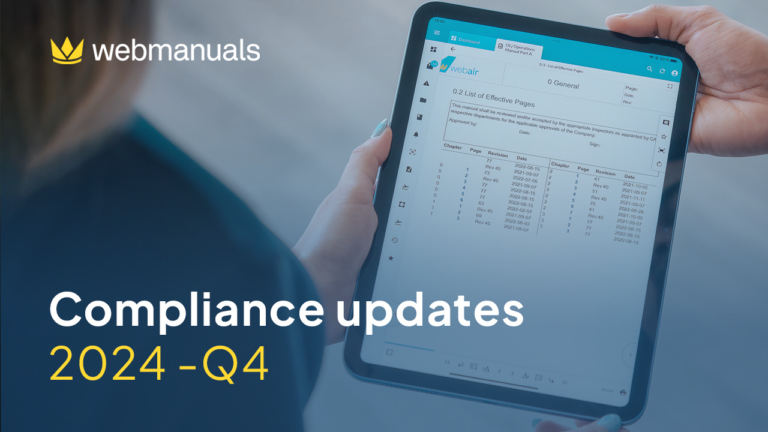In this case study, Florence Baudin, Legislation and Quality Representative, Luxair, and Santiago Mesa, Sales Executive – Aeronautical Engineer, Web Manuals, on the digitization of Flight Operations Manuals and Regulatory Compliance at Luxair.
Airlines are always looking for ways to improve the quality and efficiency of their operations so, in this article, we want to share with you a few highlights from the recent implementation of a program to digitize flight operations manuals and regulatory compliance at Luxair. But first, we’ll give you a brief introduction to the authors and to Luxair.
INTRODUCTIONS
Florence Baudin works with Luxair as Quality Representative in the Flight Operations Department. Her background is in engineering with a focus on structures and airworthiness. Santiago Mesa, Aeronautical Engineer and Sales Executive at Web Manuals, has a background in CAMO engineering in Colombia, working with Jetstream32 in a regional airline where he became experienced at working traditional paper manuals.
Luxair is a small to medium-sized regional airline and part of a group in which, apart from the airline, there is Luxair Tours, a travel agency; Luxair Cargo, handling cargo aircraft; and Luxair Services which are ground handling and check-in agents. The fleet includes four Boeing 737-800 and four 737-700 as well as eleven Bombardier Q400. Most flights are in Europe but there are some destinations in Africa and in Asia. In 2018, more than 2 million passengers flew with Luxair — roughly four times the population of the home country of Luxembourg.
DOCUMENT EDITING
How many readers are still using Microsoft Word for editing and authoring their manuals and how many have specialized tools in place?
Luxair was certainly a Word user in this context; as were or are many businesses. However, Operations manuals have so many chapters that they’ve become huge and difficult to manage in one document. So Luxair used to separate each chapter into one individual Word document and transform each of those documents into PDFs which could be combined together to create the manual. That process wasted a lot of time in production, combining the different PDFs together, creating bookmarks; so Luxair started to look for tools that could help with this task and be tailored to the company’s specific needs (Word cannot be adapted to meet specific requirements in the business).
That search led Luxair to contact Web Manuals who demonstrated that their solution could be tailored to the needs of the user company and that they could develop features to address any specific user needs. It isn’t so much that it’s not possible to manage manuals using Word but the benefits of using a tool like Web Manuals is that it introduces efficiency into the work with manuals and delivers a number of benefits.
“It isn’t so much that it’s not possible to manage manuals using Word but the benefits of using a tool like Web Manuals is that it introduces efficiency into the work with manuals and delivers a number of benefits.”
BENEFITS OF USING A DIGITAL TOOL
One important benefit is customization. For example, Luxair has its own layout. Instead of making the layout in Word and having issues with headers and footers, the layouts were sent to Web Manuals who compiled them exactly as Luxair wanted and that is fixed with no issues. There is also a reviewing process in which specific people can be assigned to review particular documents, to give comments, reject pages and, importantly, they don’t have to scroll through the whole document to find all the changes. It’s possible to go from one change to another which makes the work much easier. And there are a lot of automatic features such as the list of effective pages: any readers who have to edit manuals will know that doing that manually is a nightmare, changing one page then having to go back to the start of the manual to edit the table of effective pages because, if it’s not done right away it’ll be forgotten leading to discrepancies: plus, of course, it’s required by the authorities to do that, so you wouldn’t wish to mess it up. Automatically updating the list of effective pages is a very useful capability. Also, the table of contents is automatically generated plus there is a log of changes in which every change, every addition or removal, is all automatically recorded and the user can opt to show them in the log of changes, which makes the manual easier to prepare.
BENEFITS OF USING A DIGITAL TOOL TO SUPPORT COMPLIANCE
As readers will understand, documents in Operations department are live documents inasmuch as they are constantly changing because of the nature of the document itself since it is tied to regulations and might be subject to many changes from the regulator. That implies that there will have to be constant adjustments to the documentation. Bearing this in mind, Web Manuals has designed a tool that provides linkage between the regulations and the manuals. Users will always be notified when there are changes by their competent authority; EASA, FAA or other CAAs. This is a further benefit from the software.
Another thing that has been very helpful for Luxair has been the Compliance Library. However users manage compliance, they have to deal with massive books. Those books are not very easy to refer to every time and Luxair used to manually update each chapter covering the subject of the regulation: that took a lot of time and, every time there was a change in a regulation it was not easy to find where in the manuals there was a paragraph with a reference to the regulation in question. Web Manuals helps to ensure that manuals remain compliant and up-to-date with the current regulations.
Benefits – Compliance
- Helps ensuring the company compliance monitoring of the document
- Improves audit capability with compliance libraries
- Possibility to create a compliance matrix for each regulation
- Automatic alert in case of change in regulation
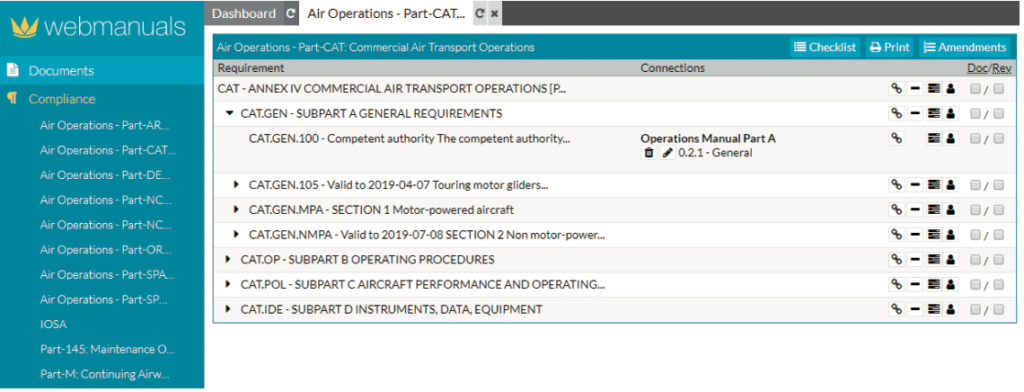
Figure 1 is an overview of what the compliance module of Web Manuals looks like. It can be seen that the tab selected is for Air Operations — part-CAT… and that every paragraph and sub-paragraph is listed from which users can link chapters or sub-chapters in their manuals to the requirements of, in this case, the EASA regulation. That helps with the compliance matrix and it also helps if there is a query as to whether the airline is compliant with any particular regulation; the user can look on the screen to see where the airline is compliant. There aren’t just the numbers of the regulations on the tool but also all of the associated text and when there has been a change so that it can be seen where the regulation text has been updated.
This is very helpful for Audits because, usually, when there is an audit, the big book of the manual is required. Now, Luxair does not necessarily need that because it’s possible to simply go to the tool, go through the regulatory requirements and, in front of those will be the relevant chapters in the manuals making it much easier to satisfy the audit. At Luxair, before the Web Manuals tool was available, the process was very long but now is much quicker.
“… it’s possible to simply go to the tool, go through the regulatory requirements and, in front of those will be the relevant chapters in the manuals making it much easier to satisfy the audit.”
That compliance can be exported to an Excel Sheet to create a compliance matrix showing which requirements have been complied with and which ones have not or are not applicable. And there is an alert to the user when there is a change of regulation so that the regulation watch can be kept in-house and the teams behind the software will send a notification that a particular regulation has changed and will indicate exactly where the change has been made. That automation of the notifications where there are changes in the regulations is one of the key benefits of the Web manuals solution. Plus, with that list, the user knows where they have to continue to direct man hours in order to be able to maintain compliance.
Luxair EFB System
So far we have covered the authoring part of working with manuals and how compliance can be incorporated in all documents. But there is another very important part to this and that is how does the information get distributed; how to ensure that pilots and crew are always getting the correct and latest up-to-date information. For Luxair, once the documentation is ready, it is distributed to crews via the airline’s EFB system (figure 3.1) which Luxair developed in-house — in fact it was a pilot who developed it for pilots so it does exactly what they want. It’s a complete tool with many Applications including a performance tool, mass & balance, a reporting tool and, the subject of this article, a documentation display tool.
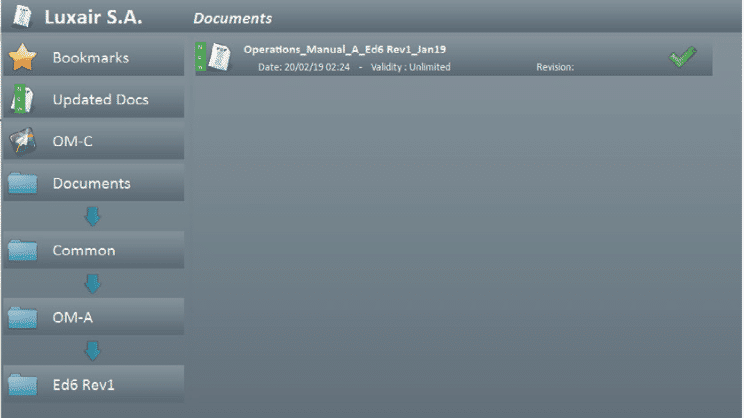
The EFB is simple with each folder named and further folders within each and, if there’s a document like the Operations Manual Part A (figure 3.2) and you click on it, it opens as a PDF viewer.
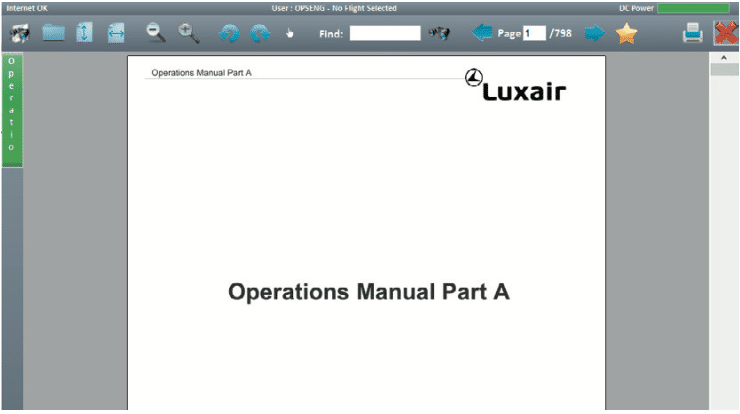
The creation of PDFs and book marks is very easy with this system so the pilot can go through the manual by just going through the bookmarks. What readers will also be interested to know is that, at Luxair, we have had an EFB class 1 since 2003; switching to EFB class 2 in 2014. The spirit of digitization has been in the business for quite a long time so flight crews and crews are used to it. But it’s still important for flight crew who have not always known iPads to also be able to adapt to this new technology.
A Summary of the Advantages of Using a Digital System
Compared to hard copy paper or even a digital tool that is not optimized, such as Word there are a number of advantages. Having digitized documents will help in a lot of ways.
Everything is in a single device where users don’t need to switch either from one document to another or one application to another or to a different device to access, say, a check-list. There is a lot of weight saving (no need for hard copies in the cockpit) which translates to fuel saving. Updating the documentation is very easy, there is a manager where all the documents are uploaded and, once it’s synchronized, the EFBs can each be synchronized and downloaded to the tablet. When the documents have been downloaded, it’s easy to track who has read the document. Also, it’s possible to access the documentation offline which is very important for flights where the EFB is not connected to the Internet.
WORKFLOW
When there’s a change of regulation, Luxair is able to update manuals using their new Web manuals tool (figure 4).

Then, once the change has been agreed internally, it is submitted to a review for approval and, once it has been approved, it is published with the documentation uploaded to the EFB. But it isn’t only the EFB on which Crews can see the documentation; there is also what Luxair calls crewDoc, an online platform that crew members can access from home via their own laptop where there is the same content as on the EFB. So if, while at home, crew members want to start to look at, say, their next training event syllabus, they can access that information on their computer without having to go through the crew room or to the cockpit to check those documents. Once the updated documents incorporating regulation changes have been published, approved, read and understood by the crews, the requirement for compliance will have been fulfilled.
WHAT IS NEXT?
Luxair has started to use Web manuals but only in the flight Operations department. However, when the solution was shown to other departments, such as Maintenance and Quality, they also became very interested in the process. Luxair believes that it will be a good thing to expand use of this new tool across the whole organization because, as readers will be aware, in one document another document will be referred to or another procedure and, if those links can also be made, it will become an even more powerful tool. That development was still in process at the time of writing. The management of change can be a lengthy process as readers will be aware.
With regards to the application itself, the plan is for it to be more inclusive in terms of the formats allowed to work with the platform. HTML is already incorporated in the application. We know that a lot of readers will be working with FrameMaker, although it is an outdated tool, but the format is allowed on Web Manuals so it is possible to import documentation from FrameMaker in HTML format and then get it transformed to a more agile type of format that allows a lot of functions to be automated. Also, with regards to XML, although a lot of OEMs like Boeing and Airbus are distributing their manuals on XML, it actually imposes a huge technical challenge because of the nature of the code and the language — users practically need to know how to program or code in order to make modifications to manuals. And since there is a different formatting standard for every type of aircraft, it also creates a lot of work, working with XML formats. However, the plan is to integrate with these formats in the future if that will provide real benefits to users. The way of working round will be with PDFs and with other types of format.
That’s what is foreseen for the future and, as long as there are more formats and the application is inclusive that will allow people to work with different types of documentation and get the advantages that Luxair now enjoys.
The word that occurs in so many discussions and conferences around aviation today is ‘data’ and gathering data is something that is important today in our industry but it hasn’t yet been fully integrated into flight operations regulations, for example. Today, the authorities ask airlines and operators to write four big Operations Manuals (OMs) for parts A, B, C and D, which are very hard to manage. Also, there is information in one document that overlaps with information in another document meaning that there are redundancies between those documents. So, if users or crews are looking for information on, for example, a pre-flight checklist, they would have to look at the OM Part B but if they wanted information about the flight duty regulations, they’d need to open the OM Part A. So why not streamline that information? Does it still make sense today to open documents individually whereas it’s possible to access the data in a streamlined manner?
As argued in this Luxair case study, let’s hope that the next step from the authorities is to adapt the regulations to what technology can do for airlines and flight operations.
Read more about changing EFB regulations.
About the Authors
Florence Baudin
Florence holds an MSc in Aerospace & Mechanical engineering. Her previous roles include experience with Part 21 J as a stress engineer in the UK. She later co-started a Part-M organisation within a new business charter company in Luxembourg as a Deputy Maintenance Manager. At Luxair, Florence takes care of documentation and compliance for Flight Operations.
Santiago Mesa
Santiago studied Aeronautical Engineering. Then he started working for an Air Ambulance operator in the engineering department before working as a CAMO Engineer for a Jetstream32 aircraft fleet in a regional airline: leading the incorporation to the schedule maintenance of the SSID (Supplemental Structural Inspection Document) issued by BAE for the first life cycle extension of the Jetstream32. Santiago is currently a Sales Executive at Web Manuals.
Luxair
Luxair Luxembourg Airlines is a regional airline offering fast air services to most of Europe’s largest cities, business centers and international hubs. The fleet includes Boeing 737 and Bombardier Q Series.
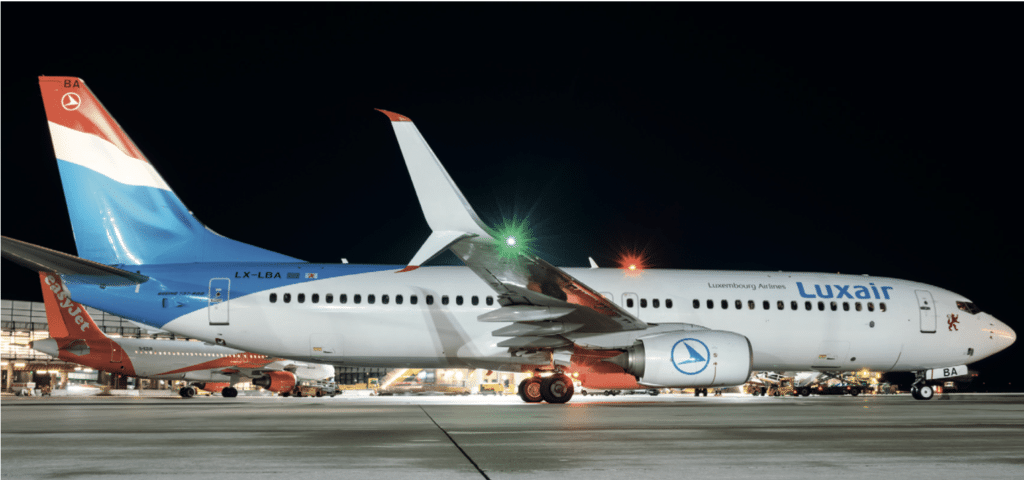
Web Manuals
Web Manuals is the tool for easy and controlled authoring, publishing and distributing of operational and technical manuals within the aviation industry. The mission of Web Manuals is to simplify the digitizing of manuals so that clients save both time and money in editing, publishing and distributing aviation service providers in Europe, the US, the Middle East and Africa.





